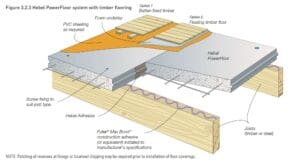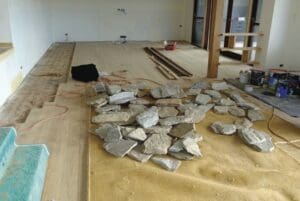
Tattooing
You must log in to ATFA as a member (with an active account) to view this content. Not a member? Join today.
Home > Information Sheets > General
Exclusive to ATFA’s members are the ever-popular extensive collection of information sheets, where we delve deep into the intricate world of timber flooring. From technical aspects of floors and decks, sanding, coating, to general tips, consumer awareness, OH&S, environmental concerns, and contractor awareness.
Equip yourself with the knowledge to make informed decisions, ensure best practices, and stay updated with the latest in the industry from over 100 technical documents – created by the ATFA for ATFA Members.

You must log in to ATFA as a member (with an active account) to view this content. Not a member? Join today.

You must log in to ATFA as a member (with an active account) to view this content. Not a member? Join today.

When deciding whether to install a new floor over an existing surface such as tiles, stone, existing timber flooring, or a sand and cement screed, specific considerations come into play to ensure a sound outcome. The following is a list of such considerations to guide your decisions.

In recent times, some concerning data about the spike in theft of tradespeople’s equipment – mainly hand and power tools – has arisen. It was stated that $33 million of hand and power tools were stolen during a single year!

One of the main attributes of engineered flooring is that it has a face veneer or lamella of solid timber that is bonded onto a more stable base layer – thereby increasing the product’s in-service stability when considering its performance in comparison to solid timber products. Required expansion allowances are reduced when using an engineered product – keeping in mind, that all manufacturer’s installation requirements should be followed.

The staining of timber floors both on-site and factory-finished has become an increasingly popular concept in recent years as the demand for variety in decorative finishes increases. This has been amplified by the increase in the variety of more user-friendly site-applied stains and colouring systems; the general increase in the skill level of contractors; and the increased volumes of relatively inexpensive imported prefinished/pre-coloured flooring available.

As the headline suggests, the answer will lie in the professional expertise of the operator asked to assess the situation.
Some of the common issues that may arise include borer damage, dry rot, floods and termite infestation, among others.

One of the main attributes of engineered flooring is that it has a face veneer or lamella of solid timber that is bonded onto a more stable base layer, thereby increasing the product’s in-service stability. Every board in an engineered floor is different.

In many Australian states, building regulatory authorities have developed a Guide to Standards and Tolerances for new building work

While larger businesses and those with overseas connections are very familiar with importation requirements, many small to medium businesses these days are making their own international arrangements.

An information sheet more suited to Queensland and NSW members, however, may have relevance in other locations from time to time. This is a snapshot in time examination of two closely related unseasonal weather conditions.

This information sheet provides a snapshot of licensing conditions across the various jurisdictions as at July 1st 2022

Watersplash is not defined by the MBIE but may be considered the intermittent minor wetting of parts of a floor in the normal use of a sanitary fixture or appliance.

New Zealand specific information sheet – E3/AS1 section 3.0 of the Building Code covers Watersplash with some suitable flooring materials listed in 3.1.1 Floors.

The popularity of prefabricated products has seen rapid growth over the last decade and is seen as a more rapid method of building than onsite construction.

This information sheet explains how the ‘Pencil Hardness Test’ can be used to help assess the hardness of coatings.

This Information sheet is to clarify what the NICNAS scheme is and how the products we use need to be registered under it.

When fire breaks out in a building, the risk to life safety is two- fold.

Temporary floor protection, whether this be a prefinished floor or site finished floor, is essential for preventing costly damage during the construction of a building or with renovations.

Timber floors, being solid T&G, engineered, laminate or bamboo, may all experience water damage at some stage in their life.